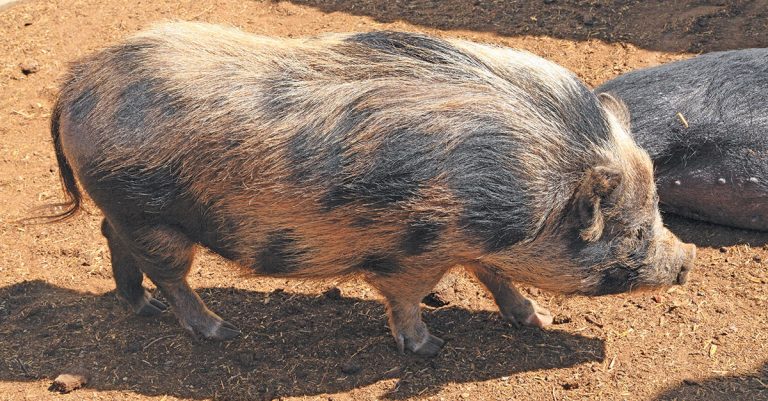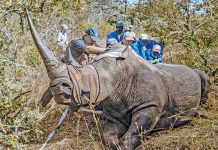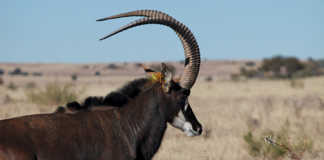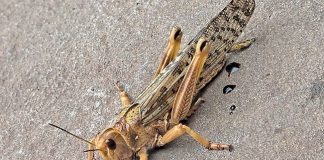
Photo: Glenneis Kriel
If you intend to farm pigs, it makes financial sense to buy the best genetic material you can afford right from the start.
“Although this might be more expensive initially, the use of superior genetics to form the foundation of a herd will produce huge dividends in the long run,” says Dr Danie Visser, agricultural adviser and strategic analyst at Juventis Consulting.
Farmers who are already in the game should analyse the strengths and weaknesses of their herds and look for genetics to compliment or strengthen them.
Whether new or established, however, a producer should always source this genetic material from a reputable breeding company, stud breeder or multiplier herd.
Visser advises farmers to consider the breeding objectives of the supplier, the size of its gene pool, and the availability of the breed nationally and internationally when choosing genetics.
“The breeder should be registered with the Pig Breeders’ Society of South Africa and have thorough records of the genetic performance of the specific lines offered. Also consider aftersales care, as many companies these days supply farmers with crossbreeding replacement gilts and genetic agreements to help them make the most of their genetic lines,” explains Visser.
Farmers should also familiarise themselves with the disease status and biosecurity measures of the breeder or company selling the animals, and discuss the best way to bring new genetic material onto the farm, and the quarantine measures, with their veterinarian.
“Great care should be taken to ensure that the genetic material is disease-free, as contagious diseases will spread like wildfire, especially under intensive production conditions,” says Visser.
Best commercial breeds
The South African Landrace, Large White and Duroc are the most popular commercial pig breeds in South Africa. The Landrace and Large White are renowned for their outstanding mothering traits, whereas the Duroc is better known for its excellent growth and meat quality.
Most commercial farmers use generation one crosses (F1) to make the most of the unique attributes of each breed. Visser explains that F1 sows form the foundation of the commercial pig industry and are the backbone of the pig production chain in South Africa.
“F1 sows are bred from pure breeds. Their genetic composition being highly dependent on the improvement of the purebred mother lines, generally the Landrace or Large White. Heterosis [hybrid vigour] is manifested in traits with low heredity, such as ovulation rate, number of piglets born alive, milk production, survival rate and conception rate.”
Farmers may produce their own F1 sows from purebred animals or an in-house semen agreement contract, but this requires additional space and much more skill and management than buying them in from a third party. The majority of farmers therefore tend to replace their sows at a rate of 30% to 40% per year.
A terminal sire line is then used on the F1 sows to further exploit heterosis, with most of the terminal sire lines used in South Africa coming from PIC’s 337 and 410 lines, Topigs Norsvin’s Tempo line or the Duroc breed, according to Visser.
The idea behind the use of a terminal sire on F1 sows is to strengthen the dam line
traits of the white breeds – such as fertility, mothering ability, milk production and
quick conception after weaning – with the traits of the sire line, such as improved feed conversion, meat quality and dressing percentage.
The pure breeds and F1 sows are highly adaptable, but perform best when produced in climate-controlled housing specifically designed to ease management and get the most out of sows, weaner pigs and growers.
“Pigs can be produced almost anywhere these days, thanks to the use of housing and climate control, but production might not make economic sense in areas with extreme humidity and heat, such as the Kalahari, Karoo and areas around the equator, because of the high cost of climate control and also the fact that most of these regions are far from feed sources, which drives up feed costs,” says Visser.
If the pigs are kept outdoors, their growth rates, reproduction and the number of piglets weaned will be negatively affected by climatic and other environmental factors.
“Extensive production systems are more difficult to manage, resulting in losses caused by heat stress and sunburn, sows that lie on their piglets, stock theft, summer infertility, higher feed requirements and so forth.”
Indigenous breed
Farmers looking to add value to smallholdings or use a free-range approach can consider
the use of the Kolbroek, South Africa’s only registered indigenous pig breed.
“The Kolbroek is the oldest pig breed in South Africa and was, together with the Large Black, one of the front-runners of modern pig production in South Africa. The breed played a major role in food security for many households over many decades, with almost every farm in South Africa having a couple of Kolbroek pigs between the 1920s and 1950s,” says Visser.
What makes the breed unique is its high resilience and adaptability to a wide range of climatic conditions, from Moorreesburg to Sutherland, and Bloemfontein to Musina and Hoedspruit. For this reason, they can be raised outdoors with great success, although shelter should be provided to protect them against extreme heat and cold.
The Kolbroek is a good grazer, with sows maintaining good condition throughout production, except during lactation, when additional feed is required.
“They can be kept on kikuyu, lucerne, clover or grain lands, and love curd, fruit, pumpkin and vegetables. In fact, they make great cleaners around the farm,” says Visser.
In terms of reproduction, the Kolbroek does not compare well with the Large White and Landrace which, over many years, have been specifically selected, fed and managed for high fertility. Whereas these breeds produce litters with an average of 13,5 to 15,5 piglets per year, a Kolbroek sow’s average litter size is seven to 11 piglets, according to Visser.
The breed has good mothering qualities, nevertheless, with very few piglets being lost before weaning, which is just one reason why it is ideal for free-range production.
The Kolbroek also does not boast the strong growth traits of other breeds.
“Its primary function until now was to produce a small-framed, resilient sow requiring low maintenance, with good mothering traits and adaptability. Growth rate can be improved through crossbreeding, resulting in piglets that are ready for the market between 100 and 110 days of age,” explains Visser.
Many Kolbroek breeders claim that the quality of the meat is exceptional, and ideal for niche pork products, braai sausages, and dried sausages mixed with game. Genetically, however, the breed tends to put on too much fat. To solve this problem, it can be crossed with other white breeds, particularly the Duroc, which is known for its marbling.
Visser says the Kolbroek is most suited to the organic and speciality pork market, where farmers prefer to add value to the end product themselves.
“It’s a niche product that slots in with the international Slow Food programme. The Kolbroek also makes a great pet. There is good demand for its genetics because of its small gene pool, which needs to be expanded and protected for future generations.”
Email Dr Danie Visser at [email protected], or order his book Die Kolbroek: ’n kaleidoskoop van moontlikhede. The book is available only in Afrikaans.











